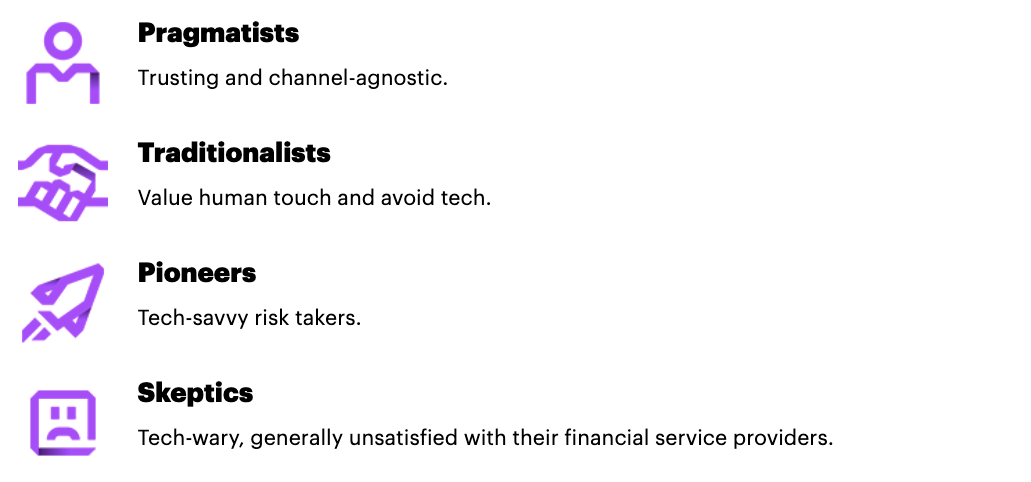Canadian banks appear to be facing a paradox. The COVID-19 pandemic has kicked the uptake of digital banking into hyperdrive. Fifty percent of consumers now interact with their bank through mobile apps or websites at least once a week, compared to 32 percent in 2018.
While this acceleration of digital interaction can drive cost efficiency, it comes with risks. Maintaining a human connection to customers is more important than ever as trust in banks overall has declined. But how can banks offer that human connection with less in-person interaction?
This is one of the most important questions facing Canadian bank leaders—and indeed, banks around the world—in 2021. Accenture’s latest Banking Consumer Study sheds light on it.
The voice of 47,000 customers
This is the latest version of our biennial global banking consumer study, which analyzes input from 47,000 banking customers in 28 markets, including Canada, to capture how consumer behaviour and preferences are changing.
To help make sense of which customers are doing what, Accenture researchers identified four consumer personas based on traits like comfort level with technology, willingness to share data, and preferences when interacting with banks. The four personas are:
The Canadian paradox
The Canadian cut of this data is particularly noteworthy. One in three of the just over 2,000 Canadian respondents identified as Traditionalists, compared with just 16 percent globally, making the human / digital paradox all the more intriguing. Across multiple categories, Canadians expressed a preference for face-to-face interaction with their banks. At the same time, they ranked “competitive pricing” at #2 in their decision factors, while respondents globally ranked pricing at #3, below “able to manage my account in a way that suits me.” Canadians appear to value in-person interaction with their banks, while at the same time placing a high value on price and value for money.
The headline takeaway is that the rush to digital risks depriving banking of its human touch at a time of eroding trust. In 2018, 47 percent of Canadian banking consumers said they trusted their bank to look after their long-term financial wellbeing, but in 2020 that had shrunk to 34 percent.
Canadians appear to value in-person interaction with their banks, while at the same time placing a high value on price and value for money.
The context around declining trust makes this statistic even more interesting. Canadian banks have gone to extraordinary lengths to accommodate their customers in the economic havoc caused by COVID-19, and customers seem to have noticed. Seventy percent of Canadian banking consumers feel that their bank supported them during the pandemic, and 62 percent feel that their bank supported the country during the pandemic. Kudos to the Canadian banks, as their clientele are more satisfied than consumers globally in these categories. (The global portions were 64 percent and 62 percent, respectively.)
Yet despite this, overall trust in banking among consumers has declined.
Couple that trust decline with the increasing ease of online account opening or product sales, plus potential competition from neo-banks and digital native companies offering payment or lending services, and a risk emerges that banking products will become commoditized and price-driven.
So what can banks do?
Digitization is here to stay. Banks can take advantage of the trend by humanizing digital touch points with hyper-personalization. Leverage data and deep insights to reach out to customers exactly when they need to hear from you. We recommend these five guiding principles as we move into this new era of digital banking:
- Understand the shift in expectations. Determine which changes in customer behavior are temporary and which are likely here to stay.
- Recognize your customer base. Examine the distinct needs and expectations of your customer segments.
- Determine your strategy. Develop a strategy and operating model to respond to the market changes that are likely to endure.
- Prioritize technology investment. Acquire technology that improves your flexibility, agility and speed to market.
- Infuse a human touch. Embed humanity and personalization into digital channels where they will have the most impact.
Acting on these five principles will enable banks to infuse humanity and personalization into their digital channels, and to benefit from the efficiency of digitalization while guarding against the threats it poses.
Building trust and human connection in a digital age
This approach can forge strong customer connections, build trust and drive growth. Of course, this is easier said than done. But the good news is that digital tools unlock many interesting strategies for connecting with customers, including:
- Proactively reaching out to customers in more contexts. All banks get in touch with customers when they have a new product to sell, but few reach out to offer help before the customer even thinks to ask—say, when they are likely to miss a credit card payment. The technology to do this at scale has been proven by the telecom industry, for example, which uses AI-driven chatbots to initiate the conversation before escalating to human experts as each conversation evolves. Banks can take advantage of this type of customer interaction as an opportunity to deepen their connection with their client. Rather than chastising an otherwise reliable customer, why not reach out with a personal offer to extend a grace period for a late fee or offer a more suitable service?
- Doubling down on video chat. The pandemic led to an explosion in demand for video advice from banks, and our data suggests that at least some of that will persist as we move into a post-vaccine world. Intererstingly, 29 percent of Canadian consumers would prefer video advice over face-to-face advice in the future. Banks that can build out robust video chat platforms that offer convenience and real human connection can capitalize on this opportunity.
While creating human connections through digital channels might seem like a paradox, banks that are able to pull off this tricky feat will be poised to not only build trust now but also drive growth into the future.
If you’d like to continue the conversation about how to do so, I would love to hear from you. I can be reached here.
You can register to access the full Accenture 2020 Global Banking Consumer Study here. You can learn what executives are thinking in our “Banking on empathy” report.











